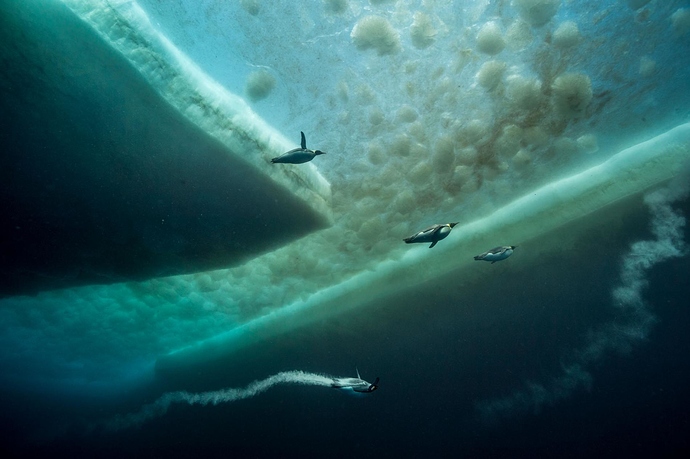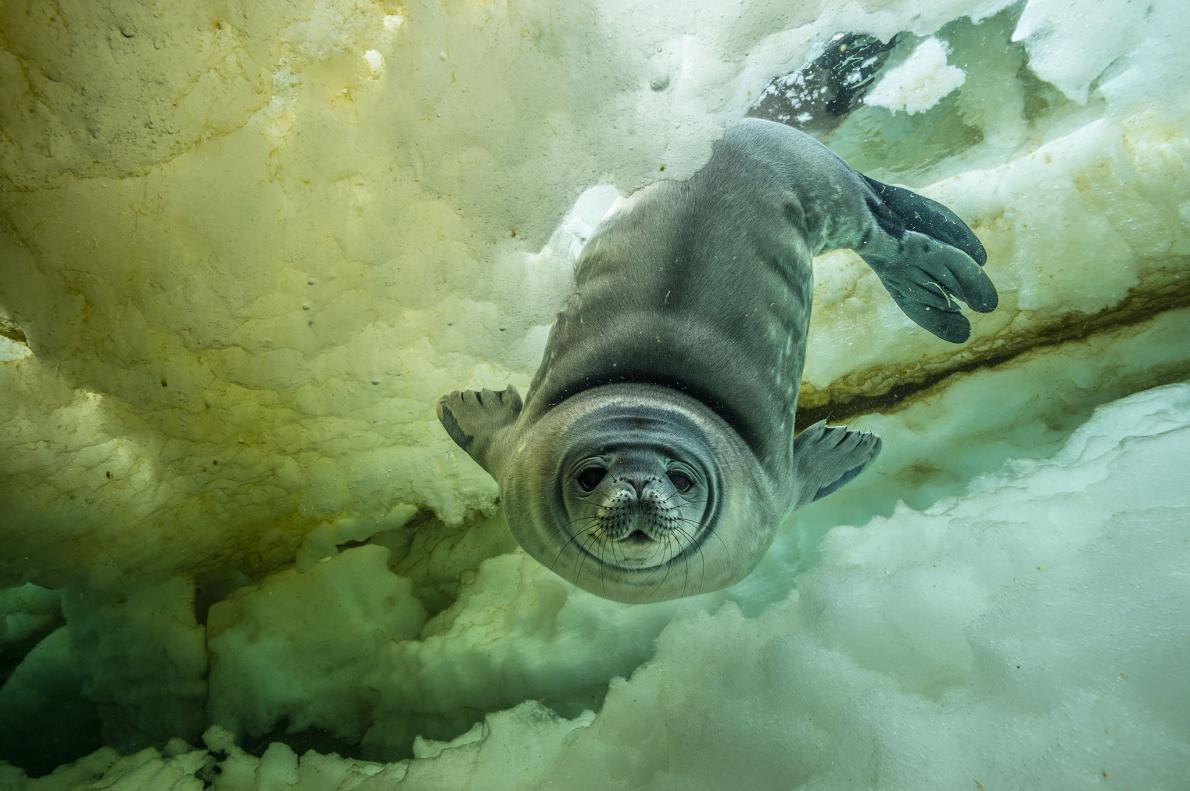What a landscape! Only a few species of seals, penguins, and other birds live in East Antarctica, and no land mammals at all. You might think the seafloor too would be a desert. In fact, it’s a luxuriant garden, with roots in deep time.
Antarctic marine life has been largely isolated from the rest of the planet for tens of millions of years, ever since the continent separated from the other continents and froze over. Since then the powerful Antarctic Circumpolar Current has swirled from west to east around Antarctica, creating a sharp temperature gradient that inhibits the spread of marine animals. The long isolation has allowed a tremendous diversity of species, unique to the region, to evolve on the seafloor.
The waters under Antarctic ice are like Mount Everest: magical, but so hostile that you have to be sure of your desire before you go. You cannot go half-heartedly; you cannot feign your passion. The demands are too great. But that’s what makes the images you see here unprecedented, and the experience of having taken them and of having seen this place so unforgettable.
After 36 days we felt we’d only begun to plumb it. The trip was so intense—the work so hard and exhausting, the sleep each night so deep—that in memory it seems to fuse into a single, 36-day-long dive. Our feet and hands froze, but our emotions were on a perpetual boil.

